Exploring the 10 Types of Jinn as Described in Islamic Belief
Discovering the Fascinating World of Jinn and Their Varieties in Islamic Beliefs
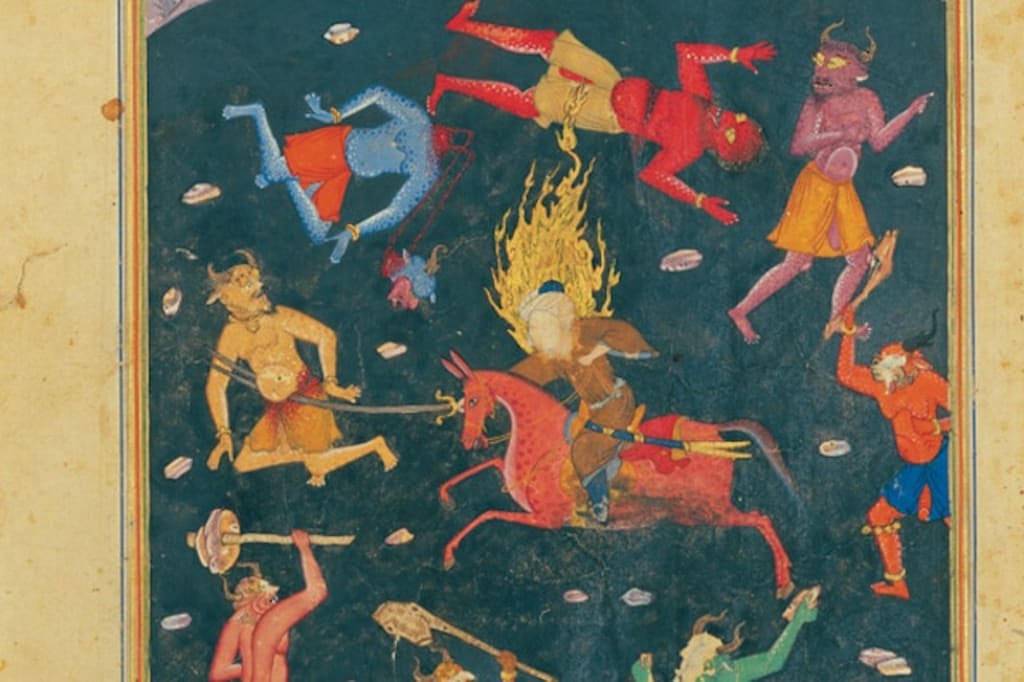
Jinn, which can also be spelled djinn or genie, are supernatural beings that are believed to exist in Islamic culture. They are created from smokeless flames or "mists of scorching fire" and are endowed with free will. The concept of jinn is an integral part of Islamic theology and mythology, and it is mentioned multiple times in the Quran. In Islamic culture, jinn are thought to interact with humans in diverse ways, including possessing individuals, fulfilling wishes, and causing harm. Islamic texts mention different kinds of jinn, each possessing distinct characteristics and abilities. In this article, we will explore the concept of jinn in detail and examine their significance in Islamic culture.
Hinn
Hinn are supernatural beings in Arabian folklore that exist alongside jinn and demons. They are also believed to be part of a pre-Adamitic race in Islamic beliefs and are recognized by the Druze along with Binn, Timm, and Rimm. The Alawi sect ( The Alawites are a community with a unique combination of religious and ethnic characteristics, residing mainly in the Levant region, and practicing Alawism, a branch of Islam that has its roots in Shia Islam) considers the Jinn to be part of the "circle of time" that predates humanity, and the Hinn, binn, Timm, rimm, Jann, and jinn all roamed the earth before humans emerged. According to Ibn Kathir,( ʿImād al-Dīn Ismāʿīl ibn ʿUmar ibn Kathīr, was a prominent Muslim theologian and historian born around 1300 in Bosra, Syria. He emerged as one of the foremost intellectual personalities of 14th-century Syria and passed away in February 1373 in Damascus, Syria.) the hinn and binn shed blood on earth before humans, which caused the angels to question God's command to place Adam as a vicegerent. Some believe that the hinn fought alongside the angels against the earthen jinn, while others associate them with air and believe that they take the form of dogs. Hinn has also been mentioned in pre-Islamic poems alongside jinn. Additionally, Muhammad Al-Tahir ibn Ashur (Muhammad al-Tahir ibn Muhammad ibn Muhammad al-Tahir ibn Ashur, born in 1879 and passed away in August 1973, was an Islamic scholar who obtained his degree from the University of Ez-Zitouna. He was widely recognized in his field of expertise) which suggests that the Hinn and Binn may have originated from Persian mythology or the ancient Greek Titans.
SOURCE: https://www.creativespirits.net/hinn-demon/
Ghūl
The ghūl is a supernatural being in Arabic folklore that is said to dwell in deserted places and burial grounds. It is considered to be a type of jinn and was believed to be the offspring of Iblīs, the prince of darkness in Islam. The ghūl was known for its ability to shape-shift into different forms, but it could always be recognized by its signature sign, which was the hooves of an ass. It was commonly portrayed as a female and was often mistaken for another type of female jinn species, the siʿlā, which was witch-like in appearance and unchanging in form.
The ghūl was known for stalking the desert and appearing in the guise of an alluring woman to distract travellers. Those who fell for its tricks were killed and consumed. The only way to protect oneself from a ghūl was to strike it dead in one blow, as a second blow would only bring it back to life again.
The ghūl has been a prominent figure in Bedouin folklore for centuries and has been featured in pre-Islamic Arabic poetry, including that of Taʾabbaṭa Sharran(Thabit ibn Jabr, who is commonly referred to by his epithet Ta'abbata Sharran , was a poet of the su'luk (vagabond) school during the late 6th or early 7th century CE in pre-Islamic Arabia). In North Africa, it easily merged with existing Berber folklore that already included many demons and mythical creatures. Today, the term ghūl is often used in Arabic to refer to either a human or demonic cannibal, and it is often used to scare misbehaving children.
The English term 'ghoul' comes from the Arabic ghūl and originally referred to a creature that robbed graves and fed on dead bodies and children. In the West, ghouls are often portrayed as shape-shifting creatures that have no specific appearance but are known for luring people away from the main roads by setting fires and riding on dogs and hares.
Although ghouls are not mentioned in the Quran, they are mentioned in the hadith. Some consider the ghoul to be a type of jinn, while others suggest that they are burned devils. According to legend, shaytan (devils) once had access to the heavens where they eavesdropped, and then returned to Earth to pass on hidden knowledge to soothsayers.
SOURCE: https://www.britannica.com/topic/ghoul
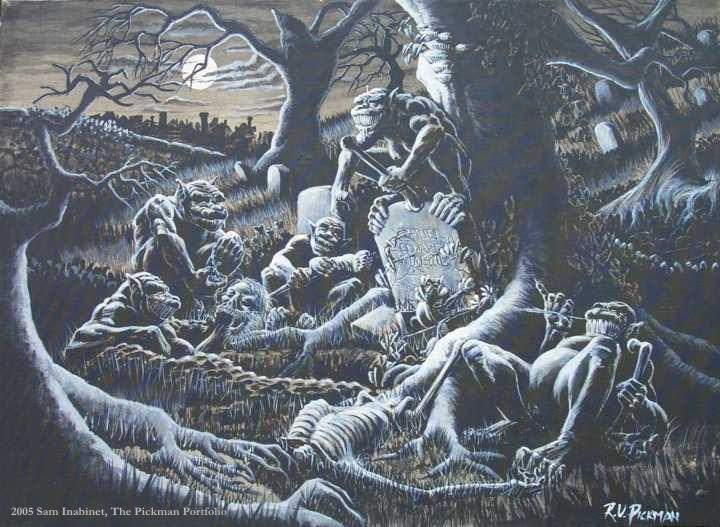
Jann
According to Islamic beliefs, the Jann are considered to be the ancestors of the Jinn, who inhabited the earth before the creation of Adam. Some consider them to be the weakest class of jinn, as they were punished and transformed, comparable to how apes are seen as transformed humans. In Arabic, the word Jann means "to hide" or an agile snake, and it is used to describe a supernatural creature or a serpent in the Quran. In Sahih Muslim, it is described as being created out of a mixture of fire, and in Persian Islamic legends, Jann ibn Jann ruled the world before Adam, and a war ensued between him and Al-Harith (Iblis) and the angels, resulting in his downfall.
Jann is distinct from the broader term jinn, which refers to a range of supernatural creatures that came into existence later. Jann is the father of the jinn, and some identify him with Iblis or Azazil, created from the fires of samum (a fire related to demons in Ancient Arabic lore and later Islamic beliefs), but most distinguish between Iblis, the father of devils, and Jann, the father of jinn. The Pyramids of Giza are also believed by many Arabic legends to be the remains of the works done under the rule of Jann ibn Jann.
Ibn Arabi, a well-known Sunni mystic from the medieval period, believed in the Unity of Existence( is a Sufi concept that states everything in the universe is a manifestation of the same ultimate reality, which is God) and viewed Jann, the father of jinn, as the source of animal power. In his teachings, Jann was created by God as the inner aspect of human beings, representing the animal soul that is concealed from the senses. According to Ibn Arabi, Satan is one of Jann's descendants and embodies the power of illusion, which is one of the strongest powers of animal power.
SOURCE: https://en.wikipedia.org/wiki/Jann_(legendary_creature)
Marid
The Marid are a famous group of Jinn and are believed to be the most powerful among them. They are also the type of Jinn that people usually associate with the idea of genies and can change their appearance. The word 'marid' means 'giants,' which refers to their large size.
The Marid are known for their ability to grant wishes, and they might be the inspiration behind the legend of the 'Three Wishes.' However, obtaining these wishes comes with a price, and it often requires a fierce battle to obtain them. To get them to grant wishes, they can be imprisoned with magic or honoured through a ritual. Another way is through flattery, but an immense amount of it is required to please them.
The term 'mārid' is derived from the Arabic root word 'm-r-d,' which means rebellious or disobedient. The word has been used to describe evil spirits in the Qur'an and is also associated with demons and giants in modern written Arabic. There is no universal agreement on the exact nature of the Marid, and some sources use the terms Marid and Ifrit interchangeably.
According to Amira El Zein (Associate Professor with Georgetown University's School of Foreign Service in Qatar), the Marid are creatures that strive to predict the future by ascending to the heavens and spying on the angels. They are also mentioned in Sirat Sayf ibn Dhi-Yazan, where they are described as powerful demons who are usually outwitted by humans.
SOURCES: https://en.wikipedia.org/wiki/Marid:
https://mythology.net/mythical-creatures/jinn/
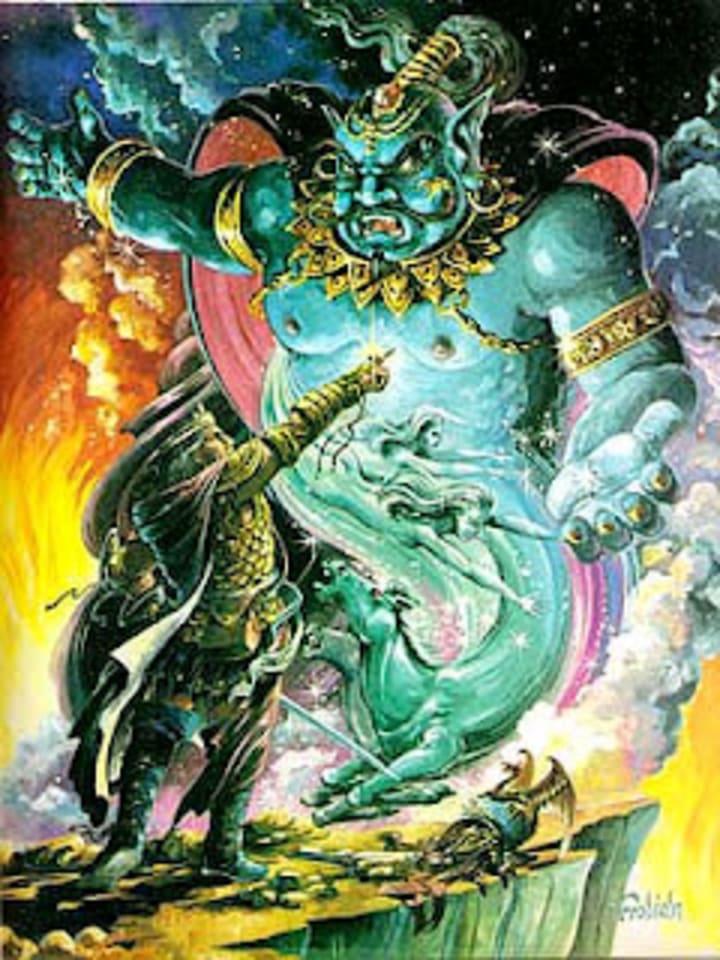
Ifrit
Ifrits, also spelled afreet, afrit, afrite, or efreet, are powerful malevolent supernatural beings in Islamic mythology and folklore. They are considered to be a class of rebellious supernatural beings, but the exact meaning of the term ifrit is difficult to determine. The term is only used once in the Qurʾān, where it seems to refer to a rebellious member of the jinn. Later Arabic philologists assigned the term the meanings "rebellious" and "strong," and ifrit subsequently came to refer to an entire class of formidable rebellious beings.
According to popular tales, ifrits are depicted as enormous winged creatures of smoke, either male or female, who live underground and frequent ruins. They live in a society structured along ancient Arab tribal lines, complete with kings, tribes, and clans. While ordinary weapons and forces have no power over them, they are susceptible to magic, which humans can use to kill them or to capture and enslave them.
In Islamic Egypt, afarit are often associated with part of a human's soul. They are believed to be independent entities that live in cemeteries and wander around places the dead person frequently visited until the Day of Judgment. A person who died a natural death does not have a malevolent ifrit. Only people who are killed give rise to a dangerous and active ifrit, drawn to the blood of the victim.
In Moroccan belief, the afarit form a more powerful type of demon compared to the jinn and other supernatural creatures. They have a more substantial existence and are greater in scale and capacity than other demons. Their physical appearance is often portrayed as having monstrous deformities, such as claw-like or thorny hands, flaming eyes or seven heads.
There is a story that circulates among the Shabak community in Northern Iraq about a certain ifrit who incensed Ali by his evil nature long before the creation of Adam. For the ifrit's wickedness, Ali chained the ifrit and left him alone. When Muhammad found the ifrit, he brought him to Ali, who decided to release him under the condition that he surrender to the will of God.
SOURCES: https://www.britannica.com/topic/ifri
https://en.wikipedia.org/wiki/Ifrit#Shabakism
Shiqq
The Shiqq is a type of Jinn that is considered lower in rank and is described as only being half-formed, resulting in a monstrous appearance. According to Islamic folklore, they were known to mate with humans to produce another type of Jinn called Nasnas. However, skeptics often explain the origin of the Shiqq and their offspring as humans with genetic disorders. In these cases, the Shiqq can lose part of their upper or lower body length, while the Nasnas lose only one side. The Shiqq is often associated with bad omens, and medieval Muslims believed that the death of a human infant at birth was a sign that a Shiqq had been born somewhere on
the outskirts of their settlement. One famous Shiqq, who was a soothsayer with one eye, one hand, and one leg, repeatedly predicted the messengership of Muhammad, and his reports are recorded in history books with the certainty of tawatur (is a concept that seeks to classify hadith traditions into more or less reliable categories based on the multiplicity of attestation traditions standing behind them)in meaning.
SOURCE: https://the-demonic-paradise.fandom.com/wiki/Shiqq
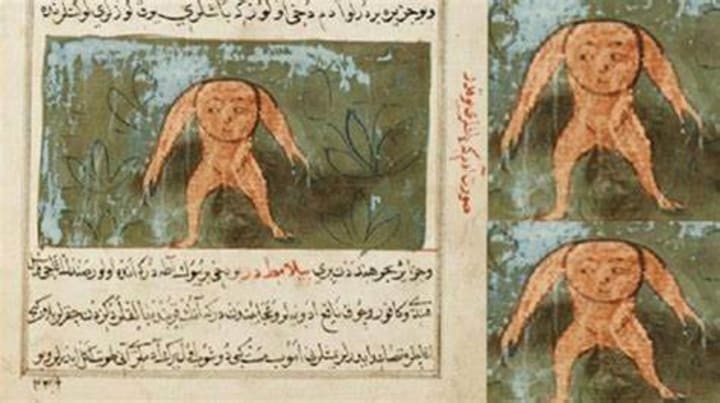
Nasnas
the Nasnas, also known as Monopod, is a monstrous humanoid creature that appears to have only half of the limbs and face of a normal human. According to legend, the Nasnas is the offspring of a Shiqq, a demon, and a human being. In "The Story of the Sage and the Scholar," a character is transformed into a nasnas after a magician applies kohl to one of his eyes. The creature is also mentioned in Gustave Flaubert's The Temptation of Saint Anthony. According to Edward Lane, a 19th-century translator of The Thousand and One Nights, the Nasnas is half a human being, with half a head, half a body, one arm, and one leg, which it hops on with much agility. In Somali folklore, there is a similar creature called "xunguruuf" or "Hungruf" that was believed to be able to kill a person just by touching them, leaving the victim without any flesh in mere seconds.
SOURCE: https://mythus.fandom.com/wiki/Nasnas
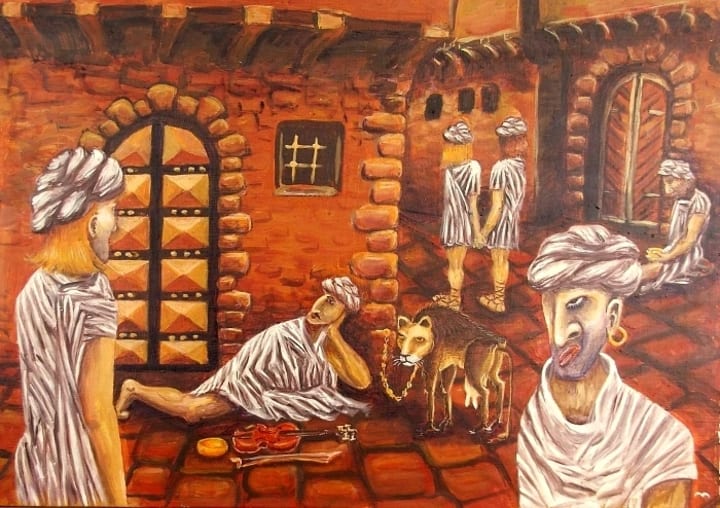
Palis
The palis is a mythical creature that has been the subject of many tales and stories in Arabia and other various cultures. According to legends, the palis is a vampiric being that resembles a bat and is known for its insatiable thirst for blood. It is said to inhabit deserts and other isolated areas where it can hunt for its prey undisturbed.
Despite its fearsome reputation, the palis is believed to have low intelligence and can be easily outsmarted by humans who are clever enough. Its preferred method of attack is to sneak up on sleeping individuals and drain their blood by licking the soles of their feet. This behaviour is believed to be the origin of the saying "watch your step" in some cultures.
However, there are ways to protect oneself from the palis. It can be fooled by two people sleeping end to end with the soles of their feet together or under each other’s heads. , making it difficult for the creature to access the feet. Additionally, some people believe that carrying garlic or other strong-smelling herbs can repel the palis.
In some cultures, the palis is seen as a symbol of evil and is associated with witchcraft and sorcery. It is often portrayed as a servant of dark forces and is believed to be a manifestation of demonic energy. Despite the palis' fearsome reputation, it has become a popular subject in folklore and is often included in stories and legends that are passed down from generation to generation.
SOURCE: https://saudiscoop.com/lifestyle/types-of-jinn-in-islam/#h-8-palis:
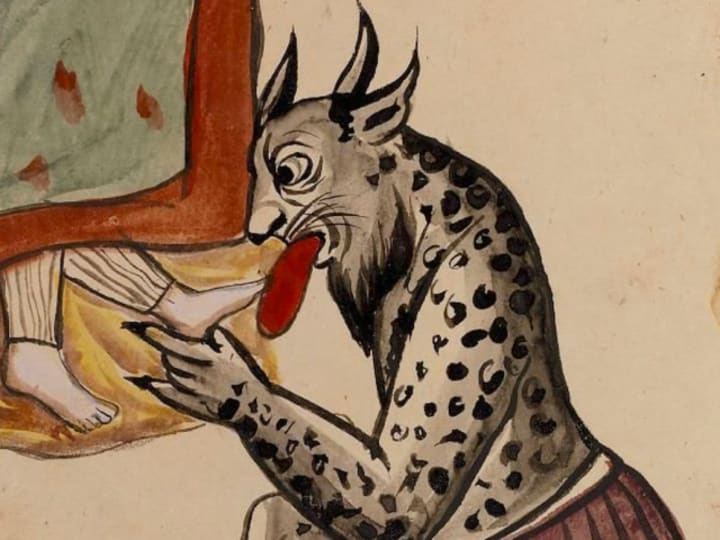
Sila
Sila is a supernatural creature that belongs to the jinn or ghouls in Arabian folklore. This type of creature is considered to be one of the most malicious types of jinn. They are described as highly skilled shapeshifters, often taking on human form, and are usually depicted as female. Despite their impressive shapeshifting abilities, they can be recognized by their hybrid appearances as animals.
According to legends, Sila typically resides in the desolate parts of the desert where they lead travellers and nomads astray, leading them to their death. They are also known for seducing and marrying men or even giving birth to a child from a relationship between human and jinn.
While Silas are usually female and are aligned with intercourse and a type
of magical jinn, not all of them are succubae or female. In pre-Islamic Arab countries, there was a legend about one man who fell in love with a si'lat and had children who were known as "Banu Si'lat". It was rumored that the Arab population was conceived from descendants of 'Amr ibn Yarbu's' children who were half-si'lat. According to Iraqi historian, Mahmud Shukri al-Alusi, Arabs refer to Si'lat as women who are slim, witty, powerful, and accused of being unloyal seductresses.
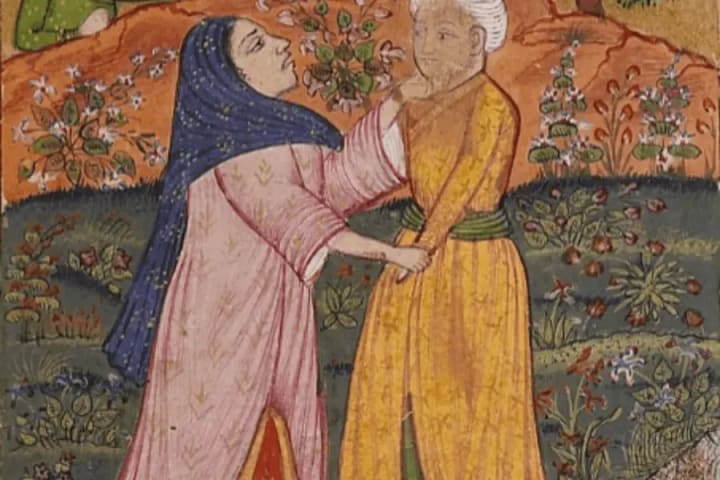
Shaytan
Shaytan is an evil spirit in Islam that urges humans and jinn to commit sins by whispering in their hearts. Although invisible to humans, they are believed to be repulsive and monstrous creatures created from fire. The Quran describes various ways that shayāṭīn tempt humans into sin, including teaching sorcery, lurking near humans without being seen, and stealing news from the angels. Iblis, also known as ash-shayṭān or Satan, is their leader. According to Muslim philosophical writings, shayāṭīn struggle against noble angels in the imaginal reality over the human mind, consisting of both angelic and devilish qualities. The term shayatin has its origins in the Arabic language, where it is derived from the word š-ṭ-n, meaning "distant" or "astray." In pre-Islamic Arabia, this term was used to denote an evil spirit. With the emergence of Islam, the meaning of shayatin moved closer to the Christian concept of devils.
SOURCES :https://en.wikipedia.org/wiki/Shaitan#Hadith:






Comments (2)
aly suhail is not accepting comments at the moment
Want to show your support? Send them a one-off tip.